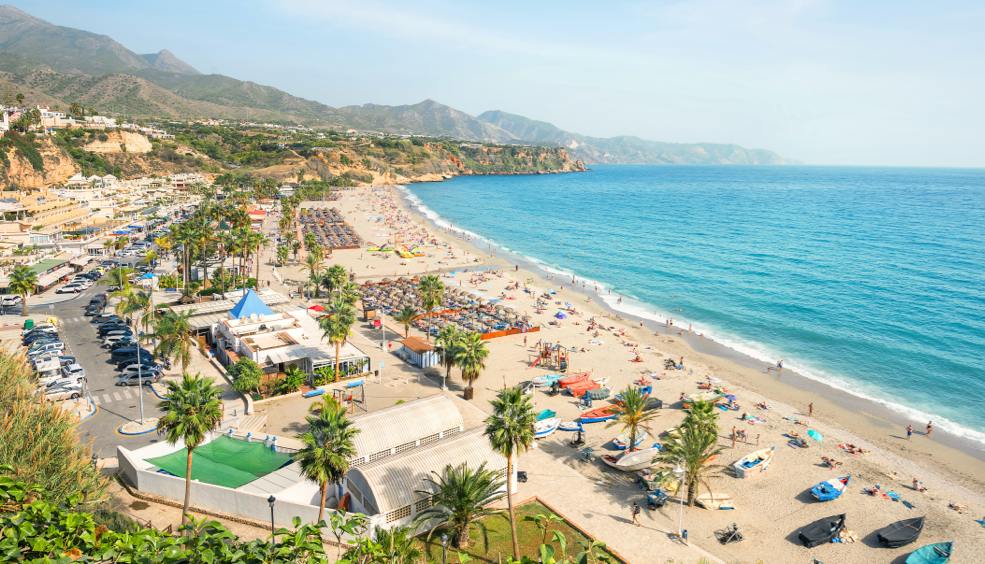New routes from London to Spain with Vueling
Gatwick Airport now has direct flights to Malaga (Costa del Sol, Andalusia), Seville (Andalusia), Granada (Andalusia), Almería (Andalusia), Cádiz (Jerez, Andalusia), Menorca (Balearic Islands), Oviedo (Asturias) and A Coruña (Galicia).
more info3 COOL DESTINATIONS IN SPAIN TO GET AWAY FROM THE SUMMER HEAT
If you are desperate to get away from the sweltering heat, take a look at these destinations and get ready to use a blanket at night.
more infoThe best national parks in Europe
Europe is home to a constellation of spectacular national parks, some of them UNESCO world heritage sites. Grab your boots, we're leaving!
more infoXixon Sound
Gijon Sound is a musical movement that arose in Asturias during the early 1990s to become one of the most popular scenes in Spanish indie music. While Los Planetas were starting to define the musical movement in Granada that would go on to counter another musical scene created in Madrid during the 1980s by the name of the ‘Movida Madrileña’, La Buena Vida was doing the same in San Sebastian and El Niño Gusano in Zaragoza – decentralising the focus placed by Spanish music on the capital city that had so greatly featured in the ‘Movida Madrileña’.
Many of you will remember the most iconic band of this sound, Australian Blonde, whose hit song Chup Chup was used for the film ‘Las historias del Kronen’ by Montxo Armendáriz and was even heard on the radio shows of Los 40 Principales. However, you may be surprised to learn that other bands of equal importance coincided in time and space with Australian Blonde, such as Penelope Trip, Manta Ray and Nosoträsh. Penelope Trip provided the space for many of the bands from the movement to rehearse and Nacho Vegas from Manta Ray used to provide drinks at La Plaza – a bar that became the temple where all indie musicians from Asturias would gather. Many of the musicians from the Gijon Sound movement studied at Oviedo University and spent a great deal of time on the Milan Campus, whose cafeteria often served as a meeting place for the bands of the 1990s. Besides the bands mentioned above, other Asturian bands like Doctor Explosión should also be recognised as, although they were not fully involved in the indie sound of the Gijon Sound, they were in the right place at the right time. Also worthy of special mention are the bands created by the girlfriends of the members of bands in the Gijon Sound movement, such as Undershakers or Nosoträsh.
Other lesser-known bands could include Screamin’ Pijas, Las Buges or Babylon Chat, one of whose tracks is included in our Podcast, or the noisy Eiminator Jr., a band who took their name from a track by Sonic Youth on their Daydream Nation album and whose sound is closer to noise pop than that of the Gijon Sound.
This brief journey through the Asturian sound would not be complete without mention of Paco Loco, the producer for most of the Gijon Sound bands, who has become perhaps the most reputable producer of Spanish indie music, the Astro music label and the Gijon International Film Festival, one of the benchmark film festivals in Spain and very closely associated with this movement. The film festival regularly includes courses, discussions, meetings with directors and daily concerts or live music parties. (www.gijonfilmfestival.com)
We now offer you a brief tour of the bars around Gijon where the Gijon Sound movement was most present, some of which still conserve the same musical spirit today. We also offer a podcast including some typical Gijon Sound tracks for you to listen to while you visit the bars we recommend here.
The small, cramped but charming bars and good music of Cimadevilla are an essential requirement for experiencing the nightlife in Asturias. Let us begin in the Plaza de la Corrada, more specifically at the La Plaza bar, spiritual home of the Gijon Sound. Very close to La Plaza, you will find Soho, which plays great Spanish music until four in the morning and then British music until the sun rises. Soho has a well-kept secret: a small upper floor accessed by climbing some steps that is easily among the best in the Gijon nightlife. We cannot fail to mention the most legendary bar in the city: Escocia. This bar has become a refuge for those of us in our early forties and still maintains the spirit of the Gijon Sound. El Patio de la Favorita is another trendy bar, with great music and a live DJ every night. On the way, between the Plaza de El Marqués and El Patio, and as long as you like a good gin & tonic, Lola Gin is a great place for you to enjoy a G&T with cucumber, lemon or lime.
1. La Plaza, Travesía de la Corrada con la de Atocha, Gijon
2. Soho, Calle de las Cruces, 33201 Gijon
3. Escocia, 7 Calle de Santa Lucía, 33206 Gijon
4. El Patio de la Favorita, 4 Calle Ezcurdia, 33203 Gijon
5. Lola Rojo Gin, 5 Calle de San Antonio, 33201 Gijon
Perfect plan to go with friends! Check our flights and sign up!
more info




